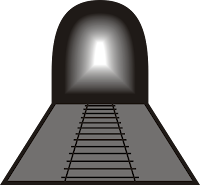Total Distance of the Race!
Suppose B’s speed is 1 m/s, then A’s speed will be 8/3 m/s.
A allowed B to go 80 meters ahead, meaning the distance between them is 80 meters.
Now, after A starts running, every second B increases this distance (80 m) by 1 meter, but A (because his speed is higher) reduces this distance by 8/3 meters.
So, each second the distance between them decreases by:
8/3 − 1 = 5/3 meters per second.
This means that to close the 80-meter gap, the time required is:
80 ÷ (5/3) = 48 seconds.
Both finish the race at the same time, meaning the gap becomes zero at the finish line, and from A’s perspective, it took him 48 seconds to complete the race at a speed of 8/3 m/s.
Therefore, the total race distance must be:
(8/3) × 48 = 128 meters.
Or
B run for 48 seconds at speed of 1m/s means covered distance of 48m. Since he started 80m ahead of A the total distance of race is 80 + 48 = 128m.





















